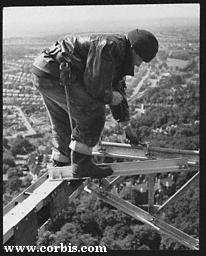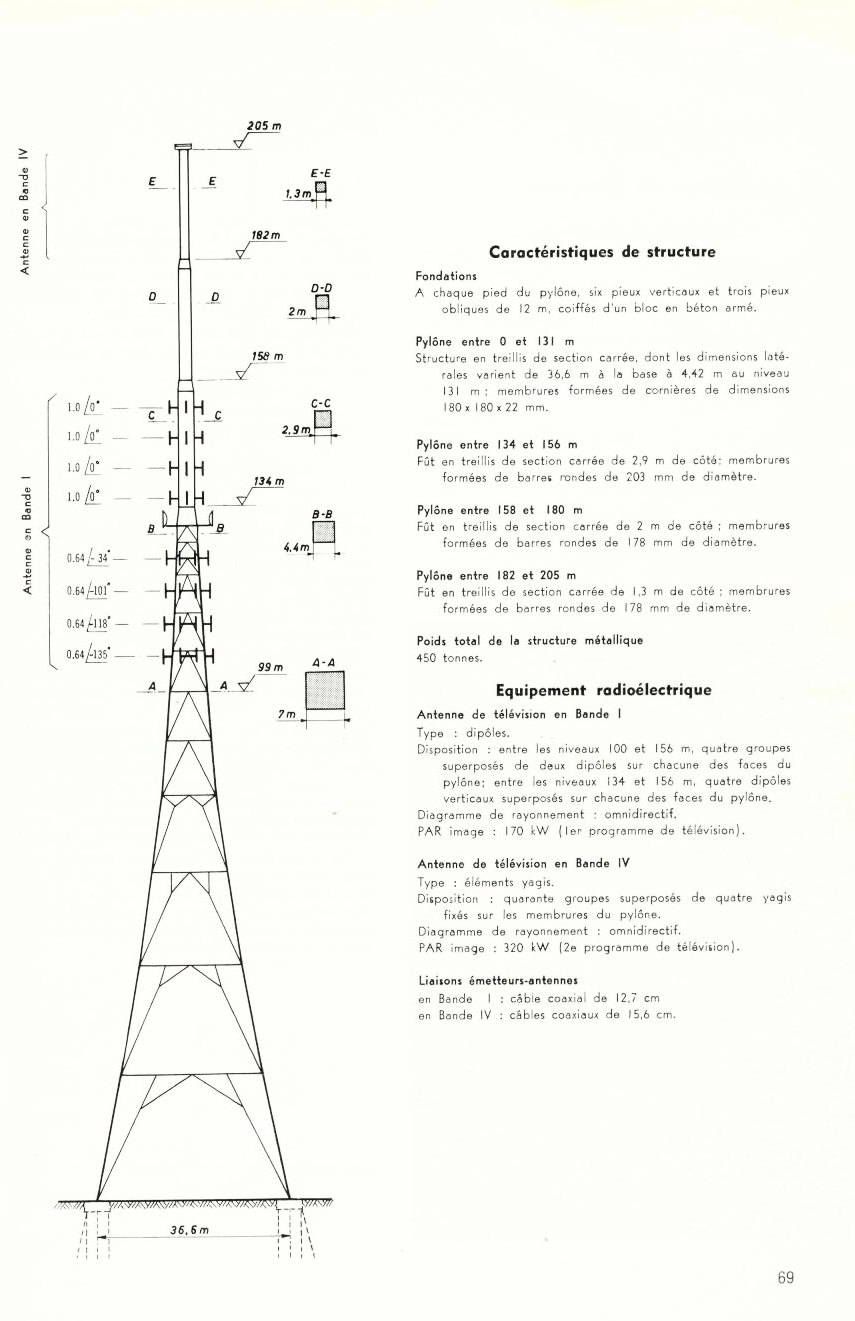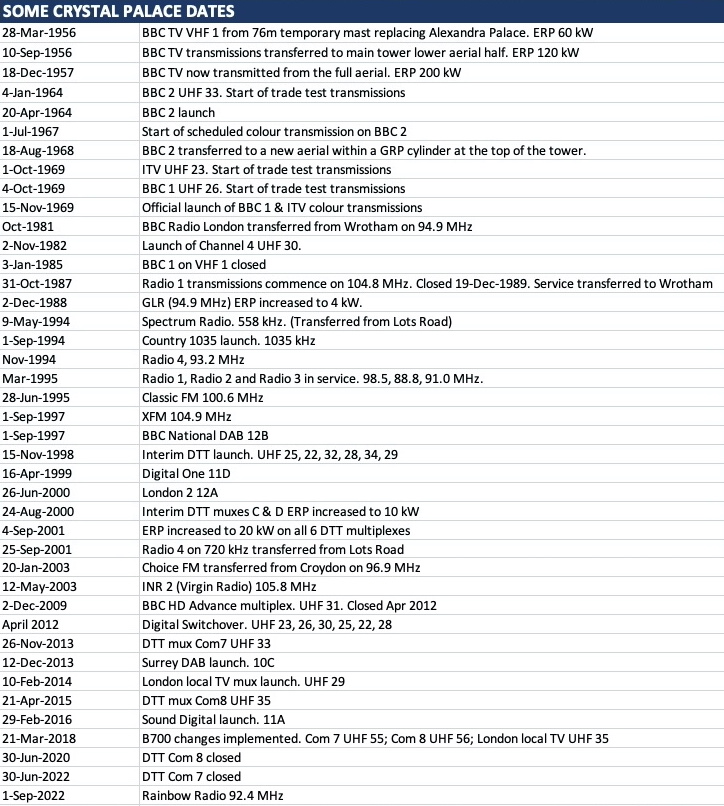 |
UK Broadcast Transmission |
|
|||||||||||
THE TRANSMISSION GALLERY
CRYSTAL PALACE
| Photos by Various, and Derek Brice | Page last updated: 2024-02-21 |
| On this page we present a few vintage photos of the Crystal Palace mast. The tower at Crystal Palace was constructed by the BBC in the mid 1950s to replace the original London TV transmitter at Alexandra Palace. Single-handed it covered (on VHF Band I ch 1) over 25% of the British population. Even on UHF it covers close to 20%. The first image is a close up of the eight tiers of Band I aerials. The third photo on this page was probably taken sometime between 1958 and mid 1962. We deduce this because it shows the mast with the experimental Band V aerials at the top. There is no sign of the BBC2 Band IV aerials which started testing on 3 Sep 1962 with an E.R.P. of 160kW before increasing to 500kW in Jan 1964. The fifth photo on this page shows work being carried out on the installation of the Band IV aerials which subsequently brought the first BBC2 service to London and the South-East. |

| Detail of the Band I aerial, upper half consisting of four tiers each of four dipoles, lower half made up of four tiers each of eight dipoles. |

| "Worker on Crystal Palace TV Mast" Photo: Hulton-Deutsch Collection/Corbis HU003989 |

| Above - the original test EMI helical aerial atop the main mast. This - as its name suggests - was a spring-like wire system coiled around the cantilever at the top. |

| Above: A golden oldie picture from an EBU Monograph, this shows detail of the helical UHF aerial used for the Band V tests. The central spine had a diameter of 0.5 m. This aerial was in use from 1958 - 1963. Below: Working at Crystal Palace on the UHF transmitting aerial for BBC 2. This was the second UHF aerial system installed, replacing the EMI helical aerial that had been used for tests. |

| Detail of the aerial that was built to radiate BBC 2 on ch 33, replacing the helical aerial. This new one was manufactured by Marconi, and consisted of tiers of 3 element Yagis, each one individually sheltered by a protective cover. Arrays like the one above were installed on the four corners of the tower, with 40 tiers on each corner. The individual aerial cases can just be made out in the photos below. |




| Courtesy of that EBU monograph again, a mast outline showing the situation in 1963/4 and giving the reader ample opportunity to practise their French. |

| Photo by Derek Brice, probably taken in the early 1970s. The ch 33 BBC 2 Marconi aerial has been replaced by the UHF GRP cylinder, as it wasn't suitable for multichannel use; this became a problem once it had been agreed that ITA would share the site for UHF, and an alternative four channel aerial had to be provided in time for the start of BBC 1 and ITA on UHF in 1969. This new aerial was manufactured by EMI, using tiers of slotted panels inside the GRP cylinder. |


The Band I TV aerial at Crystal Palace
A Tale of Two Towers - Crystal Palace and Croydon
Tests in Band V from Crystal Palace
Coverage map for TV VHF ch 1
BBC Research Paper: Tests on the Crystal Palace site
Crystal Palace UHF aerial 1968
Crystal Palace FM filler experiment
Service area of Crystal Palace
Vertically polarised band 3 aerial for Crystal Palace
The construction of the Crystal Palace TV Tower (The Phoenix Tower - YouTube video)
The new BBC television station at the Crystal Palace (BBC publication 1956)
| |
Back to TX Gallery index | TX main index
|